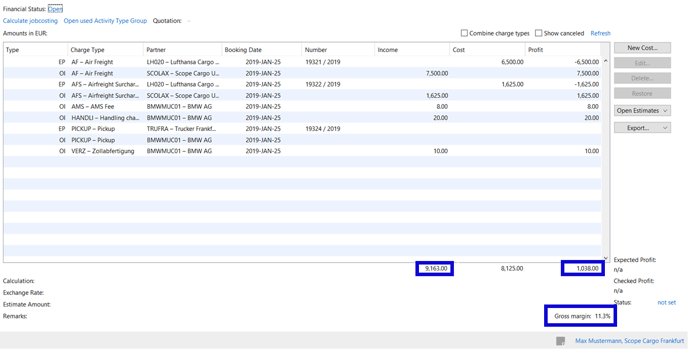How does Scope calculate gross margin on the Jobcosting tab?
Gross margin percentage is calculated by dividing profit by income and multiplying this with 100
| Profit (without duty + taxes + transit items) Income (without duty + taxes + transit items) |
x | 100 | = | gross margin percentage |
Example:
| 1.038,00 9.163,00 |
x | 100 | = | 11,33% |

NOTE
In case the Transit indication of a charge type is changed (check or uncheck the option 'Transit item' on Master Data > Finance > Charge Types) while jobcosting lines have already been created making use of this charge type, the gross margin as reported in the Shipment Overview might not be up-to-date. A recalculation will be required for all existing shipments if the Transit indicator is adjusted. Recalculation takes place automatically if you make a change to the shipment and then save the shipment. Please contact Riege Support in case a recalculation is required for many shipments that you do not expect to change any time soon, so that we can configure this recalculation for a specific period in the system settings.
